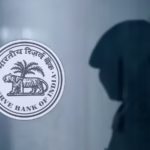Introduction
India’s public sector banking ecosystem is undergoing a digital transformation yet again—this time in the critical area of debt recovery. In a landmark collaboration, five major public sector banks, including State Bank of India (SBI) and Punjab National Bank (PNB), are working together to establish a unified platform for debt recovery.
This joint initiative specifically targets retail and MSME loans below ₹5 crore, a segment that often struggles with high delinquency rates due to inefficiencies in traditional collection methods. The new platform is expected to enhance operational efficiency, improve borrower tracking, and significantly reduce non-performing assets (NPAs).
Why a Common Platform?
Debt recovery has long been a pain point for Indian banks, particularly in smaller loan categories such as:
- Personal loans
- Education loans
- Vehicle finance
- MSME working capital loans
These are typically harder to recover due to:
- Dispersed borrower base
- Limited collateral
- High operational cost of individual recovery efforts
A centralized digital platform, backed by technology and data-sharing among banks, promises to tackle these challenges head-on.
Key Features of the Common Debt Recovery Platform
🔗 Interconnected Database
The platform will enable real-time data sharing between banks on borrower defaults, repayment status, and pending legal actions.
⚙️ AI & Automation
Incorporation of AI-based early warning systems and automated alerts for missed payments will allow banks to intervene before accounts become delinquent.
🧑💼 Shared Recovery Agents
A common pool of certified recovery professionals will operate across banks, avoiding redundancy and enabling quicker on-ground action.
📲 Borrower Communication Hub
A unified communication system via SMS, email, WhatsApp, and IVR will standardize borrower outreach and reduce ambiguity.
📈 Performance Dashboards
Banks can track recovery metrics, flag risky accounts, and generate audit trails—all on a single dashboard.
Which Banks Are Involved?
As per the initial rollout, the following PSU banks are part of the consortium:
- State Bank of India (SBI)
- Punjab National Bank (PNB)
- Canara Bank
- Bank of Baroda
- Union Bank of India
More banks are expected to join as the platform scales up, especially with the Ministry of Finance supporting digitization and NPA reduction goals.
Expected Benefits
💸 Lower Cost of Recovery
By pooling resources, banks can cut collection costs by up to 30–40%, especially for small-ticket loans.
🧠 Data-Driven Decision Making
Unified borrower history will help banks assess creditworthiness more accurately for future lending.
🏛️ Legal Process Efficiency
Common legal resources and standard documentation can speed up recovery through legal routes, like Lok Adalats and Debt Recovery Tribunals (DRTs).
👨💼 Support for MSMEs
By reducing bad loans in this segment, banks can extend more credit to genuine small businesses, aiding economic growth.
Risks and Concerns
While the initiative is promising, it comes with its own challenges:
- Data privacy concerns around sharing borrower information
- The need for regulatory oversight from RBI and Data Protection Authorities
- Risk of aggressive recovery practices, if not properly monitored
- Integration complexity, especially for older core banking systems
To address these, the platform is expected to be developed with built-in compliance layers and borrower grievance redressal mechanisms.
The Bigger Picture: NPA Management 2.0
This move is part of a broader strategy to revamp the way public sector banks handle stressed assets. Traditional methods—such as reliance on recovery agents, slow litigation, and fragmented databases—have often failed to deliver timely results. With this digital-first platform:
- Banks are shifting from reactive to proactive recovery
- Technology will become the core enabler of performance tracking
- Borrowers will receive more structured and predictable communication, reducing disputes
Conclusion
The decision by PSU banks to collaborate on a centralized debt recovery platform marks a significant turning point in India’s credit ecosystem. As retail and MSME borrowers form the backbone of the economy, ensuring disciplined repayments without overburdening the system is crucial.
With innovation, collaboration, and regulatory guidance, this initiative could become a blueprint for debt recovery across sectors, ushering in a new era of responsible lending and borrowing.
















